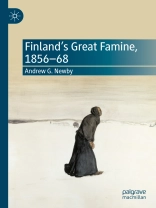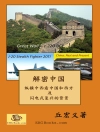This book will provide a thematic overview of one of European history’s most devastating famines, the Great Finnish Famine of the 1860s. In 1868, the nadir of several years of worsening economic conditions, 137, 000 people (approximately 8% of the Finnish population) perished as the result of hunger and disease. The attitudes and policies enacted by Finland’s devolved administration tended to follow European norms, and therefore were often similar to the “colonial” practices seen in other famines at the time. What is distinctive about this catastrophe in a mid-nineteenth-century context, is that despite Finland being a part of the Russian Empire, it was largely responsible for its own governance, and indeed was developing its economic, political and cultural autonomy at the time of the famine. Finland’s Great Famine 1856-68 examines key themes such as the use of emergency foods, domestic and overseas charity, vagrancy and crime, emergency relief works, and emigration.
Jadual kandungan
1 Introduction: “The Appalling Cry of Famine”: Famine in Nineteenth-Century Europe.- 2 Finland, Europe and the Russian Empire, 1809-1855.- 3 The Crimean War and the “Finnish Famine Relief Committee”.- 4 National Reform and Renewed Famine, 1860-66.- 5 Reactions to the “Frost Night” of 1867.- 6 The Role of Private Charity in Finland, 1867-68.- 7 Poor Relief and Public Works Schemes.- 8 Seeking Refuge at Home and Abroad, 1867-68.- 9 Famine and Regional Crises in Finland, 1868-1918.- 10 “A Sacred Responsibility to Remember”? Finland’s Great Hunger Years: Historiography, Literature and Memorialisation.- 11 Conclusion.
Mengenai Pengarang
Dr. Andrew G. Newby is Senior Lecturer in Transnational and Comparative History at the University of Jyväskylä, Finland.












